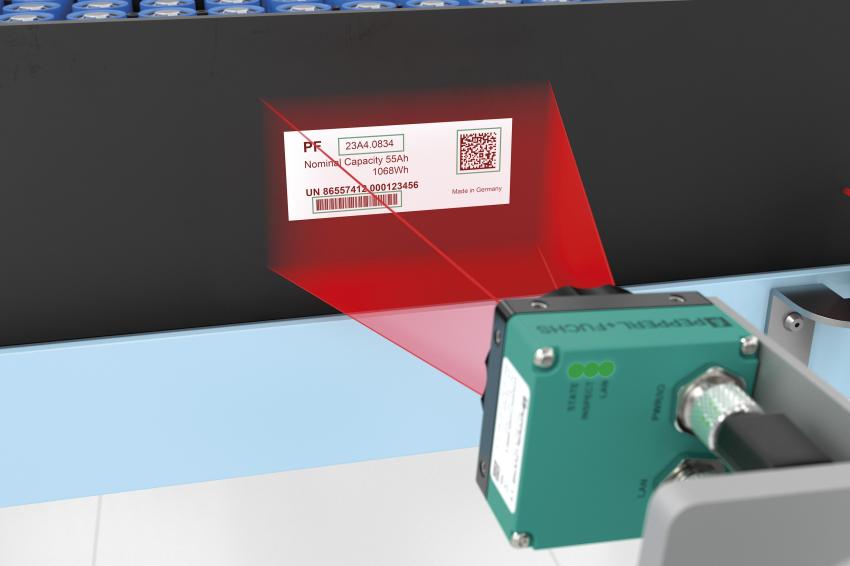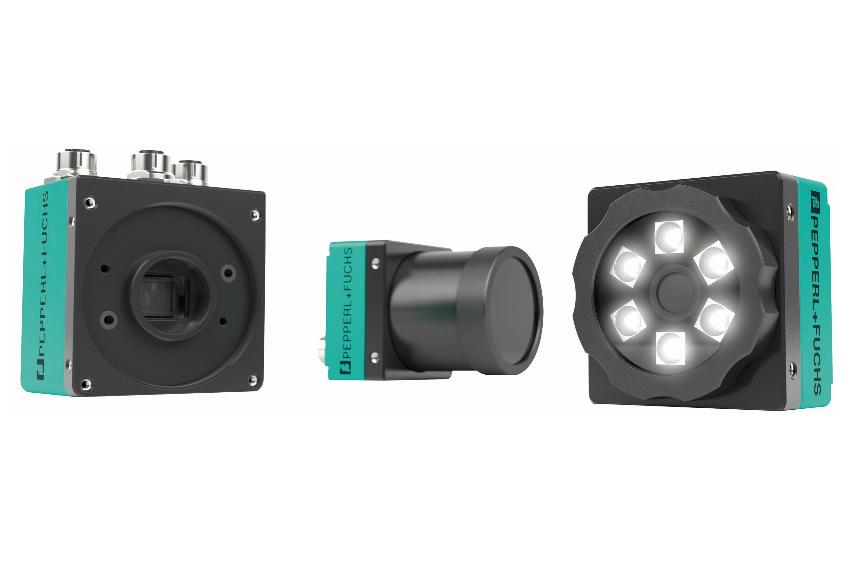Vision Sensor for Easy Reading of Codes
Camera-based, modular 2D vision sensors close gap between simple code readers and vision sensors on the one hand and complex image processing systems on the other hand
Barcodes and datamatrix are ubiquitous in everyday life and industry. Today, every smartphone can already decode their messages. And in production and warehouse logistics, reading 1D and 2D codes is elementary for controlling flows of goods. Numerous sensor types are available for this basic function. How quickly simple code readers can reach their limits is often experienced at the supermarket checkout: After the umpteenth unsuccessful scan of the code, the cashier types in a long number by hand.
Code reading is only seemingly a simple task. In automated processes with high throughput and variable target objects, it becomes a highly complex requirement. Plain code readers can only cope with it if the codes pass the reading area in precise alignment and have a clear contrast. With different code symbologies, glossy surfaces, irregular color contrasts or high conveying speeds, they are quickly overtaxed.
Similar delimitations apply to object identification based on shapes and contours. Relatively simple sensors are sufficient if the target objects are of the same shape, always aligned approximately precisely, and traveling at a not too brisk pace on the conveyor belt. Again, the greater the variations in the sequence, the more the sensor must be able to differentiate. The extent of these increases with the depth of automation and with each step in the direction of Industry 4.0. At the same time, however, the use of complex vision systems to handle such tasks would be too expensive for typical warehouse logistics applications.
Closing the gap between code reader and vision system
The camera-based 2D vision sensors of the VOS series close the gap between simple code readers and vision sensors on the one hand and complex vision systems on the other. Their range of functions includes 2D image processing and 2D positioning in the X and Y axes, presence and completeness checking, shape and color recognition, position detection, space monitoring, measurement of contours, and automated reading of codes and texts (OCR). Various functions can be combined with each other.
All devices in the series are suitable for code reading. The common code symbologies are stored in the software. The sensors can compensate for shiny and reflective surfaces by means of internal pre-filtering. They detect codes regardless of their placement and orientation. In addition, they are able to detect multiple codes simultaneously and evaluate their quality. When using multiple VOS devices in the same application, such as when reading codes from different sides, one of the devices acts as the primary sensor, to which the others are assigned in a secondary circuit. The signals are sorted by the primary sensor and output to the controller as valid data.
The series includes three other basic devices, where the ascending number in the type designation - VOS1000, VOS2000, VOS5000 - indicates the increasing scope of function and equipment options. What they have in common is the same compact housing, which contains the camera with image capture chip and adjustable lenses, the illumination as well as the integrated evaluation, digital outputs and communication interfaces.
Complete package for hardware and software
The accessories portfolio of the VOS series includes high-precision industrial lenses with C-mount connection and various focal lengths for an always optimal field of view. They also ensure the greatest possible image sharpness with low distortion and can be selected to match the test criterion, measuring distance and size of the measurement object. There are devices with integrated ring light and those with external illumination with accessories for special requirements: side or rear illumination, bright and dark field illumination. Different aperture angles are available so that even very wide and compact fields of view can be optimally illuminated. An integrated flash controller is responsible for maximum light output and ambient light-safe detection regardless of the measuring distance. Very short flash times allow objects and codes to be detected even when moving quickly.
The complete package includes a license-free software toolbox with ready-programmed tools. It allows, for example, to use a reference image for graphical parameterization. With the dynamic teach-in function or a zero-point referencing, new object shapes can be introduced into a process. One of the tools provides data on this basis for determining the position of objects for sorting and packing with robots. One can also combine several tools for a measurement task, such as a code reading with a shape recognition routine. The format of the data output can be adapted to specific requirements. The tools already cover a very wide range of typical applications, so there is no need for expensive additional software.
Application examples
Pick & Place
Robots handle the sorting and packaging of products. For reliable handling, they need precise data to determine the position of the respective target object. This is usually located in a packaging bag. A vision tool for determining the exact position data is already included in the software of the VOS series. It also handles their transfer in the appropriate data format. With the dynamic teach-in function or zero-point referencing, new object shapes can be recorded at any time. The tool detects different types of objects in the same process and assigns them.
Code reading
The reading is independent of the placement of the codes in the measuring field or their orientation. Lens and illumination can be selected appropriately from the portfolio. This allows larger measuring fields and measuring distances of up to two meters to be covered. Optical filters are available for shiny and reflective surfaces. When using several devices, one sensor takes over the primary function so that the controller receives valid data from only one camera.
Author
Markus Karch, Global Product Manager for Industrial Vision Components at Pepperl+Fuchs








